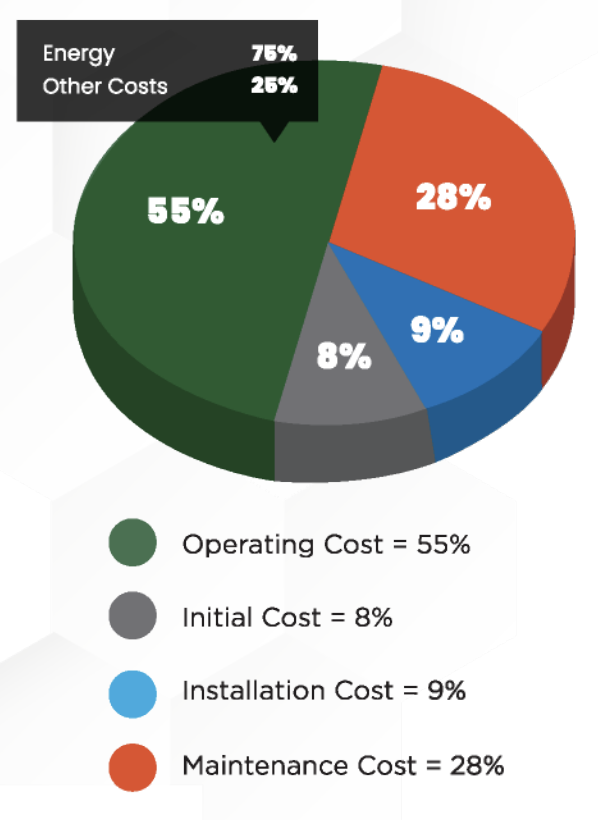EFFICIENCY
Over the life cycle of a pumping system, energy can account for as much as 75% of the operating costs. It stands to reason that the easiest and most effective way to reduce operational costs would be to reduce the amount of energy used by the pumps.
By designing a pump using our 102 years of experience, A.R. Wilfley engineers developed our line of Centennial pumps to achieve some of the highest levels of efficiency in the market today, as compared with other ANSI pump offerings. In addition, our Centennial pumps meet the Department of Energy’s PEI rating.
Over the life cycle of a pumping system, energy can account for as much as 75% of the operating costs. It stands to reason that the easiest and most effective way to reduce operational costs would be to reduce the amount of energy used by the pumps. By designing a pump using our 102 years of experience, A.R. Wilfley engineers developed our line of Centennial pumps to achieve some of the highest levels of efficiency in the market today, as compared with other ANSI pump offerings. In addition, our Centennial pumps meet the Department of Energy’s PEI rating.
The Pump Energy Index (PEI) is the new metric established by the DOE to rate the energy performance of the pumps. PEI represents a comparison between the actual horsepower used by the pump and the maximum horsepower allowed by the standard for the same type of pump. If the PEI is greater than 1.0, then the pump does not comply with the new standard and it can no longer be manufactured after 2020, unless it is redesigned to meet the standard.
The new standards apply to clean water pumps between 1 and 200 horsepower, which are used for a wide variety of applications. While the current standard applies to clean water pumps, it is Centennial Pumps view that it is only a matter of time before these efficiency requirements are implemented with other types of pumps and pump applications.
What are the scope limitations of the standard?
- Clean water applications only
- BEP power input: 1-200 horsepower
- BEP flow rate: 25 GPM or greater
- BEP head: 459 feet or less
- Temperature: 14-248 degrees Fahrenheit
- Nominal speeds: 1800 and 3600 RPM
What pumps are outside of the DOE scope?
Double suction pumps, circulators, and pool pumps, along with the following:- Non-clean water pump designs (API, ASME, slurry, wastewater, etc.)
- Nuclear spec-controlled pumps
- Mil spec pumps
Centennial helps you save energy and money and helps the environment!

PUMP LIFE CYCLE COST - 75HP

